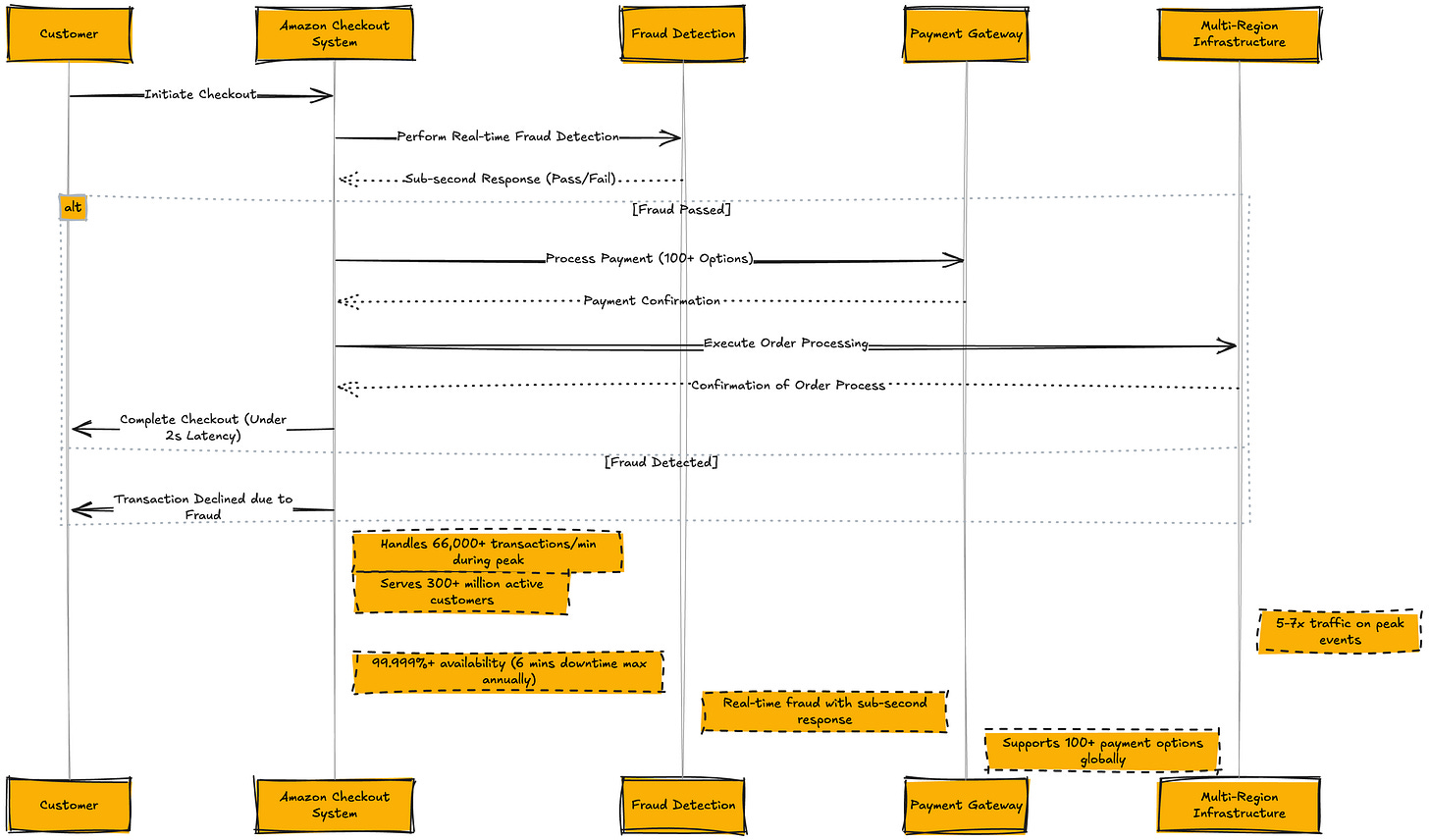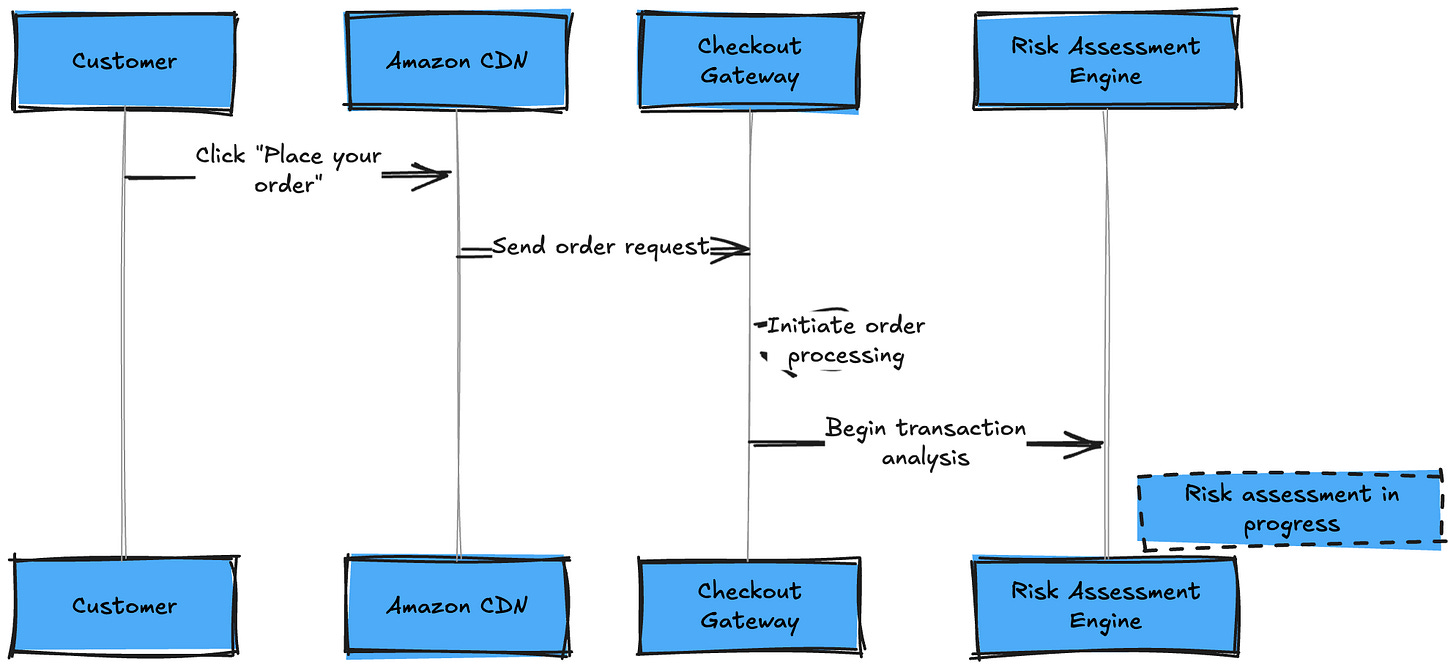[System Design Tech Case Study Pulse #77] 66,000+ Transactions Per Minute: Magic Behind Amazon's Checkout System and How It Actually Works
Behind the tech with detailed explanation and flow chart....
Hi All,
Amazon's sophisticated checkout system represents one of the most impressive feats of e-commerce engineering, processing over 66,000 transactions per minute during peak events like Black Friday and Prime Day. This incredible infrastructure enables Amazon to provide seamless checkout experiences for hundreds of millions of customers worldwide, even when transaction volumes spike to 5-7x normal levels.
Let's dive deep into how Amazon engineered this system, exploring the key architectural decisions, scaling strategies, and optimizations that enable their checkout pipeline to handle this massive volume of transactions with sub-second response times and 99.999% availability.
Learn how to Design Facebook Newsfeed
System Overview
Before diving into Amazon's checkout architecture, let's examine key metrics that highlight the scale of its operations:
Transactions processed per minute during peak events: 66,000+
Active customers: 300+ million worldwide
Peak transaction volume: Black Friday/Cyber Monday (5-7x normal traffic)
Data processed per transaction: Multiple kilobytes across dozens of services
Checkout latency: Under 2 seconds for 99% of transactions
Availability: 99.999%+ (less than 6 minutes downtime annually)
Global deployment: Multi-region infrastructure with failover capabilities
Payment methods supported: 100+ global payment options
Fraud detection: Real-time analysis with sub-second response times
How Real World Scalable Systems are Build — 200+ System Design Case Studies:
System Design Den : Must Know System Design Case Studies
Processing 2 Billion Daily Queries : How Facebook Graph Search Actually Works
3 Billion Daily Users : How Youtube Actually Scales
1.5 Billion Swipes per Day : How Tinder Matching Actually Works
500+ Million Users Daily : How Instagram Stories Actually Work
2.9 Billion Daily Active Users : How Facebook News Feed Algorithm Actually Works
20 Billion Messages Daily: How Facebook Messenger Actually Works
8+ Billion Daily Views: How Facebook's Live Video Ranking Algorithm Works
How Discord's Real-Time Chat Scales to 200+ Million Users
80 Million Photos Daily : How Instagram Achieves Real Time Photo Sharing
Serving 1 Trillion Edges in Social Graph with 1ms Read Times : How Facebook TAO works
How Lyft Handles 2x Traffic Spikes during Peak Hours with Auto scaling Infrastructure..
How It works (Behind the Tech ) —
1.User Interaction:
A customer clicks "Place your order" on the checkout page
The request is sent to Amazon's edge servers via their CDN






